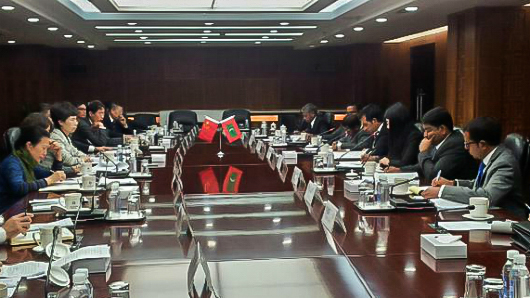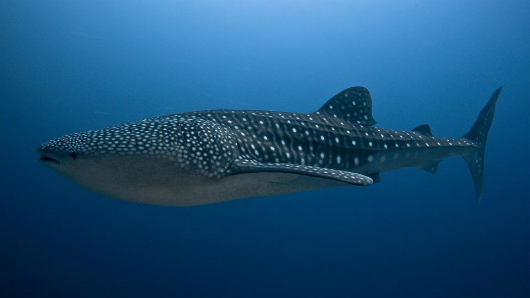Minister of Foreign Affairs Dunya Maumoon has called on the Maldives to build individual and collective resilience to face rising seas and extreme weather events associated with climate change.
In a statement issued on Friday commemorating the tenth anniversary of the 2004 Indian Ocean Tsunami, Dunya said: “Floods and rising sea levels threaten the loss of our livelihoods, our homes, our cultures and our very existence.”
“The words of scientists that have for years warned of frequent natural disasters due to climate change, are undoubtedly proving to be true.”
The Maldives must take action at home to build resilience, and continue to urge other countries to do their part to combat climate change, Dunya said.
Although the Maldives has urged the international community to reach a strong and legally binding agreement to reduce carbon emissions, President Abdulla Yameen’s administration has begun exploring for oil in the Maldives.
In October, Fisheries Minister Mohamed Shainee said a research vessel has found hydrocarbon source rock in the Maldives.
December 26 is marked in the Maldives as National Day of Unity to celebrate the collective tsunami relief effort.
“What we saw that day was the true spirit of oneness, our common history and the bonds that bind us together like no other,” Dunya said.
At a ceremony to mark the tenth anniversary of the tsunami on Thursday, Housing Minister Dr Mohamed Muizz admitted government negligence in the delays in constructing permanent housing.
Muizz said the government has now completed a majority of the 338 remaining houses for families made homeless by the tsunami. He claimed there are no families living in temporary shelters at present.
The 338 houses include 41 on Thaa Atoll Madifushi, 87 on Gaaf Alif Dhaandhoo, 50 on Gaaf Alif Nilandhoo, 76 on Gaaf Alif Vilingili and 84 on Gaaf Alif Maamendhoo.
Only 51 houses remain unfinished. These include one house on Dhaandhoo, five on Nilandhoo, 12 on Villingili, and 33 on Maamendhoo.
Muizz said the government hopes to complete all houses by the end of 2014.
The housing projects in Thaa and Gaaf Alif atolls were initially commissioned to Maldivian company Vimla and an unnamed foreign company.
The government this year handed over the projects to the Maldives National Defense Forces (MNDF), state-owned Maldives Transport and Contracting Company, the Maldives Road Development Company, and several local companies.
The government is to give these families a grant of MVR 25,000 to buy furniture as they move into their new homes.
In his speech, Muizz also claimed the opposition had obstructed the construction of the permanent housing by vandalising buildings. He did not provide additional details.
President Yameen at the National Day of Unity function urged Maldivians to control negative emotions such as anger, hatred and envy in order to work towards sustainable unity.
Related to this story
“We do not want to be in Paris to get perished,” Maldives ambassador tells climate change convention
Maldives to begin oil exploration with assistance of research vessel
Maldivians could be among first climate refugees, warns Nasheed




